
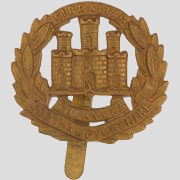
Harry Keller was my great-uncle, I don't think he was christened "Harold". He was born in the first quarter of 1890 in Kettering, Northamtonshire, and was my grandmother's brother. Unfortunately, I have no image of him.
Harry appears in the 1901 Census as aged 11 years, living with his parents, Alfred and Lucy Keller, and siblings Ellen, Annie, Louise, William, Lizzie, Edith and Robert. The family was living in Regent Street in Kettering, number 150 it looks like.
From the 1911 Census, I know what profession Harry was following in the years prior to the First World War: a Tailors Cutter. The Keller family were then living at 66 Gordon Road, Wellingborough. He obviously joined or was called up at some point for the First World War, joining the Northamptonshire Regiment, 1st Battalion. Unfortunately, his wartime service record was destroyed in the blitz of the Second World War.
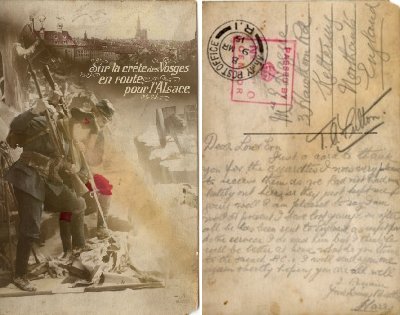
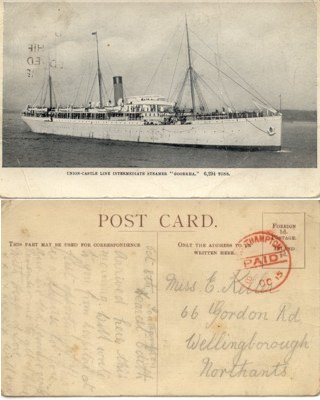
Harry Keller sent the postcard showing French soldiers bayonetting a German Imperial flag to his elder sister and her husband just 2 months before he died, posted to 3, Hawthorn Road, Kettering; probably he meant 31, Hawthorn Road. The postcard is dated 9th March, 1915.
Another postcard dated 1915, showing the Hospital Ship 'Goorkha', is from "Will" sent to Miss E Keller at 66 Gordon Road, Wellingborough, which was Frances Lucy's address before her marriage to Ernest William Hague, so the best guess is that "E" is Frances' sister, possibly Ellen, though from the 1881 census record, she would have been 34 years old in 1915. Her sister Edith was 16. There are many candidates in the BMD record for the time. The "Will" I don't know, and may have been a brother or, perhaps more likely, a sweetheart. There are too many possible "Williams" close to the family at the time.
This ship was built for Union Castle 1897. It was mined off Malta on 10 October 1917 with no casualties. Towed into Malta, decommissioned and returned to owners for repair.
At some point prior to 1915, the family moved to 88 Gold Street, Wellingborough, Northamptonshire.
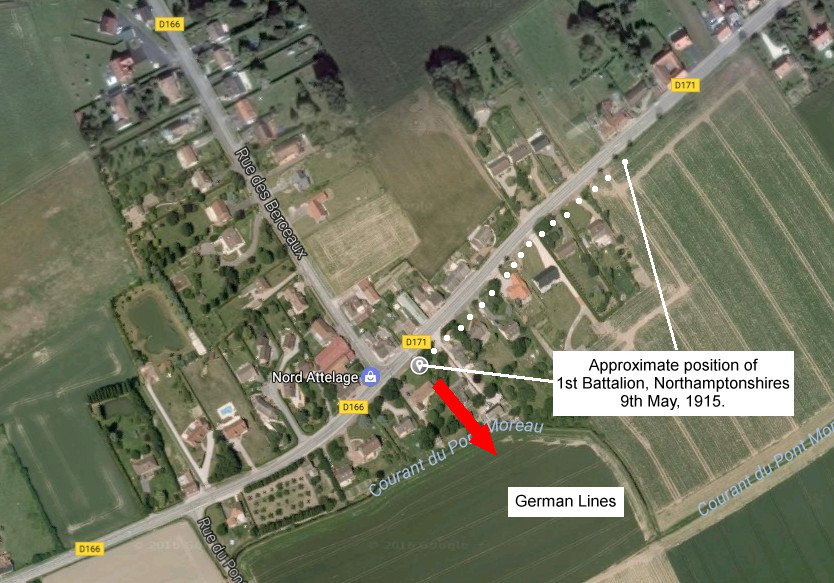
Overnight on the 8th May, 1915, the 1st Battalion of the Northamptonshire Regiment moved up to their forward positions ready for battle, peering over the flat terrain at the German lines a mere 350 yards distant to the south-east. Apparently, all were in good spirits, and had been issued with "rum rations". On the following day, 9th May, 1915, at 5.50 a.m., Harry Keller heard his officers' whistle blast, and followed his mates "over-the-top", to become one of 11,000 men to be killed or mortally wounded in the Battle of Aubers Ridge. Click the link to find a comprehensive history of this terrible battle. A quote from the site may be worth recording: "This battle was an unmitigated disaster for the British army. No ground was won and no tactical advantage gained. It is very doubtful if it had the slightest positive effect on assisting the main French attack fifteen miles to the south."
Harry's 1st Battalion, Northamptonshires, were in the "Southern Pincer" attack alongside the 2nd Royal Sussex on the south side of the Rue du Bois, near its junction with the Rue des Berceaux, just a short distance south-west of Neuve Chapelle. Many Northamptonshires were cut down as they ascended their ladders out of the trenches; others in the no-man's land in front. Harry lies there still, as do many others, under the gardens, or perhaps the houses, somewhere along that road. In total, the 1st Northamptons suffered 541 casualties and the 2nd Northamptons 426; nearly 60% of the soldiers who had heard the whistle's song on that terrible day. The "blackest day" in Northamptonshire history.
A certain Adolf Hitler, 16th Bavarian Reserve Infantry Regiment, was in the German lines facing the 2nd Battalion Northamptonshires at this battle. Why was such a monster spared, when so many good men - on both sides - perished?
The village appears to be named Richebourg, Hauts-de-France. To view the map in Google Maps, open Google Maps and enter the coordinates "50.565227, 2.753238" in the search box (without the quotes).
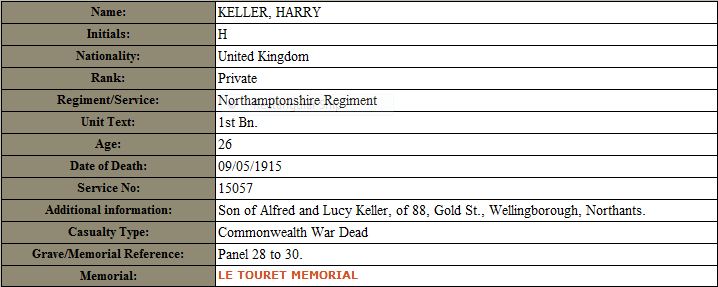
Harry's record on the Commonwealth War Graves Commision web site shows that he was one of many whose body was never recovered. His name appears on the Wellingborough War Memorial, located at Broad Green in the town, as well as the Le Touret Memorial in France, panel 29B.
An Irthlingborough Keller, Private Herbert W of the Northamptonshire Regiment, probably one of Grannie Hague's cousins but maybe even another brother to Harry, died in Palestine 19th April 1917.
I have in my possession Harry's mother's Book of Common Prayer, I presume given to her by her parents when she was about 3 years old. It is inscribed "Lucy Wright, Burton, 1858", Wright was her maiden name. Lucy Ann Wright, the daughter of William and Mary Elizabeth Wright was born in Turvey Bedfordshire in 1854, not far from where I live today.
If there are any Keller family members, who can link to the gentleman, please contact me, especially if you have any more data about the man. A photograph would be especially welcome. There are some details of the Rushden side of the Keller family (my Dad told me he had some relatives in that village) that can be seen here: Rushden Research Group.I have researched the Wright family in the village of Turvey back to 1795, and there are individuals back to the 1530s, but I don't think I will be able to get further back than John born in 1795.
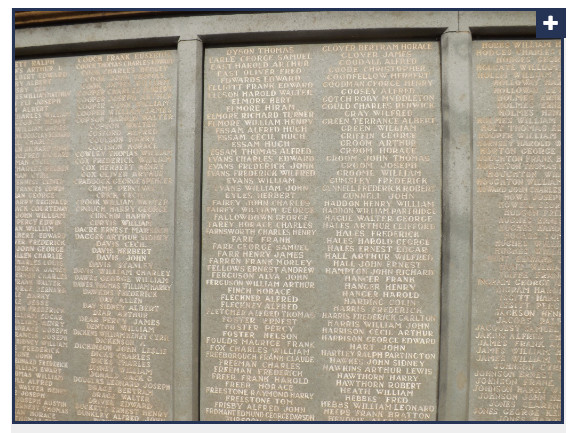
The image shows a panel from the Kettering War memorial showing three adjacent names, Henry William Haddon, William Partridge Haddon and Walter George Hague, all of whom are relatives of my grandmother.
There is a Commonwealth War Graves Commission record for this gentleman.